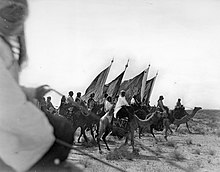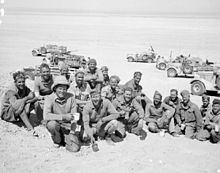
The Second Battle of El Alamein was a battle of the Second World War that took place near the Egyptian railway halt of El Alamein. The First Battle of El Alamein and the Battle of Alam el Halfa had prevented the Axis from advancing further into Egypt.

A tank is an armoured fighting vehicle intended as a primary offensive weapon in front-line ground combat. Tank designs are a balance of heavy firepower, strong armour, and battlefield mobility provided by tracks and a powerful engine; their main armament is often mounted within a turret. They are a mainstay of modern 20th and 21st century ground forces and a key part of combined arms combat.
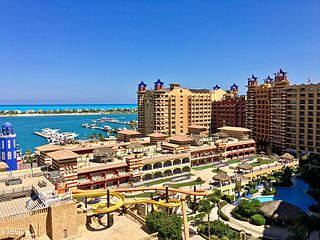
El Alamein is a town in the northern Matrouh Governorate of Egypt. Located on the Mediterranean Sea, it lies 106 kilometres (66 mi) west of Alexandria and 300 kilometres (186 mi) northwest of Cairo. The town is located on the site of the ancient city Antiphrai which was built by the Romans.(Greek: Ἀντίφραι).

Urban warfare is warfare in urban areas such as towns and cities. Urban combat differs from combat in the open at both operational and the tactical levels. Complicating factors in urban warfare include the presence of civilians and the complexity of the urban terrain. Urban combat operations may be conducted to capitalize on strategic or tactical advantages associated with the possession or the control of a particular urban area or to deny these advantages to the enemy. It is considered to be arguably the most difficult form of warfare.

XXX Corps was a corps of the British Army during the Second World War. The corps was formed in the Western Desert in September 1941. It provided extensive service in the North African Campaign and many of its units were in action at the Second Battle of El Alamein in late 1942. It then took part in the Tunisia Campaign and formed the left flank during the Allied invasion of Sicily in 1943.
Operation Urban Warrior was a United States Marine Corps program created as an exercise meant to plan and test Military Operations on Urbanized Terrain (MOUT) and urban warfare in general. It was developed in the mid 1990s by the Marine Corps Warfighting Laboratory partly in response to growing problem on inner-city fighting, and especially made urgent following the Battle of Mogadishu in 1993.

The Western Desert campaign took place in the deserts of Egypt and Libya and was the main theatre in the North African campaign of the Second World War. Military operations began in June 1940 with the Italian declaration of war and the Italian invasion of Egypt from Libya in September. Operation Compass, a five-day raid by the British in December 1940, was so successful that it led to the destruction of the Italian 10th Army over the following two months. Benito Mussolini sought help from Adolf Hitler, who sent a small German force to Tripoli under Directive 22. The Afrika Korps was formally under Italian command, as Italy was the main Axis power in the Mediterranean and North Africa.

Jungle warfare or woodland warfare is warfare in forests, jungles, or similar environments. The term encompasses military operations affected by the terrain, climate, vegetation, and wildlife of densely-wooded areas, as well as the strategies and tactics used by military forces in these situations and environments.

The Battle of Gazala, also the Gazala Offensive was fought near the village of Gazala during the Western Desert Campaign of the Second World War, west of the port of Tobruk in Libya, from 26 May to 21 June 1942. Axis troops of the Panzerarmee Afrika consisting of German and Italian units fought the British Eighth Army composed mainly of British Commonwealth, Indian and Free French troops.
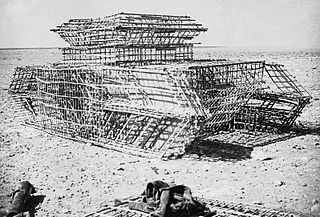
Operation Bertram was a Second World War deception operation practised by the Allied forces in Egypt led by Bernard Montgomery, in the months before the Second Battle of El Alamein in 1942. Bertram was devised by Dudley Clarke to deceive Erwin Rommel about the timing and location of the Allied attack. The operation consisted of physical deceptions using dummies and camouflage, designed and made by the British Middle East Command Camouflage Directorate led by Geoffrey Barkas. These were accompanied by electromagnetic deceptions codenamed Operation Canwell, using false radio traffic. All of these were planned to make the Axis believe that the attack would take place to the south, far from the coast road and railway, about two days later than the real attack.
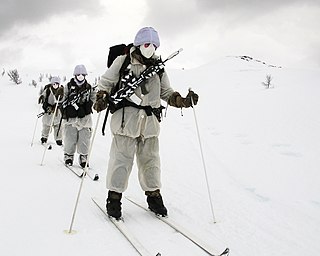
Cold-weather warfare, also known as cold-region warfare, arctic warfare or winter warfare, encompasses military operations affected by snow, ice, thawing conditions, or cold, both on land and at sea, as well as the strategies and tactics used by military forces in these situations and environments.
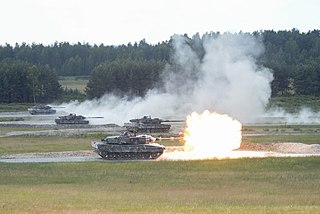
Armoured warfare or armored warfare, is the use of armoured fighting vehicles in modern warfare. It is a major component of modern methods of war. The premise of armored warfare rests on the ability of troops to penetrate conventional defensive lines through use of manoeuvre by armoured units.

Military geography is a sub-field of geography that is used by the military, as well as academics and politicians, to understand the geopolitical sphere through the military lens. To accomplish these ends, military geographers consider topics from geopolitics to physical locations’ influences on military operations and the cultural and economic impacts of a military presence. On a tactical level, a military geographer might put together the terrain and the drainage system below the surface, so a unit is not at a disadvantage if the enemy uses the drainage system to ambush it, especially in urban warfare. On a strategic level, an emerging field of strategic and military geography seeks to understand the changing human and biophysical environments that alter the security and military domains. Climate change, for example, is adding and multiplying the complexity of military strategy, planning and training. Emerging responsibilities for the military to be involved in: protection of civilian populations, women and ethnic groups; provision of humanitarian aid and disaster response (HADR); new technology and domains of training and operations, such as in cybergeography, make military geography a dynamic frontier.
If a general desired to be a successful actor in the great drama of war, his first duty is to study carefully the theater of operations so that he may see clearly the relative advantages and disadvantages it presents for himself and his enemies.
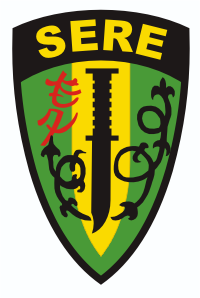
Survival, Evasion, Resistance, and Escape (SERE) is a training concept originally developed by the British during World War II. It is best known by its military acronym and prepares a range of Western forces to survive when evading or being captured. Initially focused on survival skills and evading capture, the curriculum was designed to equip military personnel, particularly pilots, with the necessary skills to survive in hostile environments. The program emphasised the importance of adhering to the military code of conduct and developing techniques for escape from captivity. Following the foundation laid by the British, the U.S. Air Force formally established its own SERE program at the end of World War II and the start of the Cold War. This program was extended to include the Navy and United States Marine Corps and was consolidated within the Air Force during the Korean War (1950–1953) with a greater focus on "resistance training."
Operation Salam was a 1942 World War II military operation organised by the Abwehr under the command of the Hungarian desert explorer László Almásy. The mission was conceived in order to assist Panzer Army Africa by delivering two German spies into British-held Egypt.
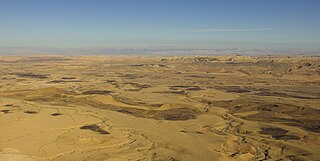
A desert is a landscape where little precipitation occurs and, consequently, living conditions create unique biomes and ecosystems. The lack of vegetation exposes the unprotected surface of the ground to denudation. About one-third of the land surface of the Earth is arid or semi-arid. This includes much of the polar regions, where little precipitation occurs, and which are sometimes called polar deserts or "cold deserts". Deserts can be classified by the amount of precipitation that falls, by the temperature that prevails, by the causes of desertification or by their geographical location.

The Eighth Army was a field army of the British Army during the Second World War. It was formed as the Western Army on 10 September 1941, in Egypt, before being renamed the Army of the Nile and then the Eighth Army on 26 September. It was created to better control the growing Allied forces based in Egypt and to direct their efforts to lift the siege of Tobruk via Operation Crusader.
An advantage of terrain occurs when military personnel gain an advantage over an enemy by using or simply in spite of, the terrain around them. The term does not exclusively apply to battles and can be used more generally regarding entire campaigns or theaters of war.

The Mapungubwe Regiment is a reserve infantry regiment of the South African Army. It traces its history as far back as 1939, and fought in the Second World War, and the Border War after 1966. It was renamed in August 2019.
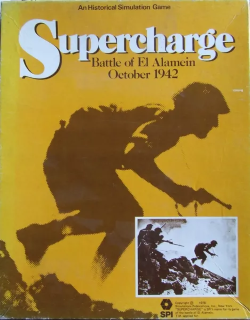
Supercharge: Battle of El Alamein, October 1942 is a board wargame published by Simulations Publications Inc. (SPI) in 1976 that simulates Operation Supercharge during the Second Battle of El Alamein of World War II. The game was originally published as part of the Four Battles in North Africa "quadrigame" — a collection of four games simulating four separate battles that all use the same rules. Supercharge was also published as an individual "folio game."


